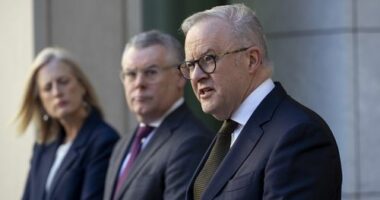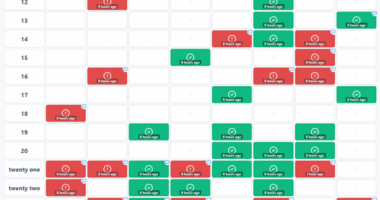Share this @internewscast.com
The Australian dollar is experiencing a “Goldilocks scenario” and is currently performing strongly, especially when compared to the United States dollar, according to experts.
This week, it reached a 10-month peak against the US dollar, surpassing 67 US cents for the first time since November 2024.
There was a slight dip following the US Federal Reserve’s announcement of a rate cut and the release of Australian job market data, which hinted at a potential cooling in the labour market.
Chris Weston, head of research at foreign exchange trader Pepperstone, shared with the SBS News’ On the Money podcast that the performance of the Australian dollar is “looking quite good” compared to both the US and New Zealand dollars.
“The Aussie dollar is doing well overall,” he noted.
“And I think if you look at relative interest rates, relative growth, with a fairly low deficit compared to other countries, we’re looking like a beacon of stability relatively speaking,” Weston said.
He added that steady iron ore prices, one of Australia’s key exports, along with strong share markets in China, the country’s largest trading partner, have contributed to the favorable conditions for the Australian dollar.
Growth doesn’t tell the whole story
Because the Aussie dollar is a speculative currency, it’s difficult to pinpoint where it should be valued or how it will grow in the future. But even then, experts say the perceived growth of the dollar isn’t so much a success story for Australia, but more a reaction to the US.
Brendan Rynne, chief economist for KPMG Australia, said the growth had more to do with the valuation of the US dollar.
Rynne, another expert, mentioned, “The strength of the Australian dollar is more related to the US dollar depreciating relative to various global currencies than any specific positive Australian economic indicators.”
Weston said the US dollar may be weakening due to concerns over whether the Federal Reserve could be “behind the curve” on interest rate cuts — having started later than others, including the Reserve Bank of Australia, weakening jobs data, and stagnant real wage growth.
He also said the impact of US President Donald Trump trying to “influence” the Federal Reserve carries a “slightly higher premium for the US dollar”.
The US dollar has been falling since Trump took office for the second time, dropping by over 10 per cent in the first half of 2025 — its worst first-half performance in more than 50 years.
In contrast, the euro has rallied by more than 13 per cent against the greenback this year.
How will this affect consumers?
If you’re planning on travelling overseas anytime soon, you might benefit from that value jump — or lose out — depending on where you’re flying to. Because while the Australian dollar has appreciated against the US dollar, it has depreciated “quite substantially” against the pound and euro, Rynne said.
A year ago, the Australian dollar was buying around 52 British pence and 60 euro cents. Now, it’s about 49 British pence and 56 euro cents.
“If you want to travel to the United States, your Australian dollars are going to buy you more than they would 12 months ago,” Rynne said. “Having a nice holiday in the US will cost you a little bit less.”
However, on the other side of the coin, travelling in Europe will be more expensive.
The dollar shift will also affect the cost to buy things from each country.
“If you were looking to buy something from the UK at the moment, it would be much more expensive than what it was 18 months ago. It’s the same with Europe,” Rynne said.
That means it will be more expensive for US companies to buy Australian goods and services, but more affordable for companies in Europe.
Still, Rynne said the Aussie dollar is in a “relatively good spot”.
“We’ve got inflation under control, we’ve got a stable political environment, we’ve got an independent central bank, we have a recognition that rates are still likely to come down from where they are at the moment.
“All of those paint a strong picture in relation to the underlying value of the Australian dollar relative to other currencies.”
Weston said he didn’t anticipate a “ripping trend” would take the Australian dollar above 70 US cents — a feat last seen in 2022 — “anytime soon”. But it could be a possibility if the US economy worsened but share markets held up, he said.
The information in this article is general in nature and is not intended as financial advice; you should consult with a licensed professional to make the decisions that are right for you.











